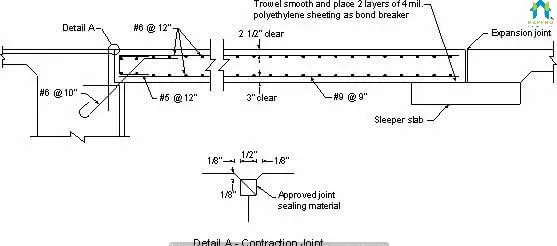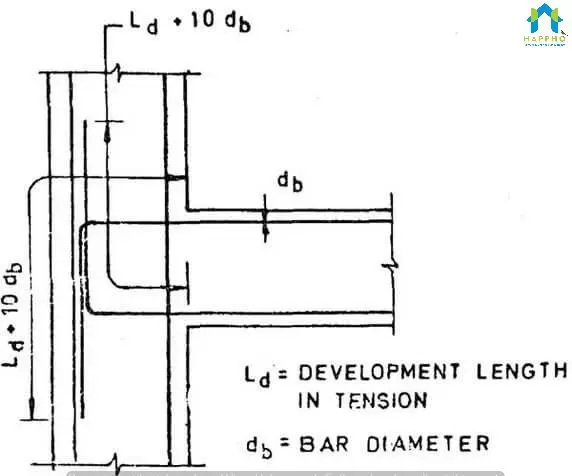What is Bar Bending Schedule?
Bar bending is a process of cutting and bending reinforcement steel into shapes as suggested by the structural engineer for various structural elements like like Slab, Beam, Coloum, Footing etc.,.
Bar Bending Schedule is a list details of bent reinforcement bars used in any given structural concrete (RCC) element. The list contains bar mark, its diameter, length, shape and weight.
Bar bending schedule is used by site engineers/home owners to estimate the quantities of various diameters of bars used in a construction, perform bar bending at site, and check the reinforcement work done by the contractor.
Advantages of Preparing Bar Bending Schedule in Construction
The following are the advantages of bar bending schedule in construction.
- Provides better estimation of reinforcement steel to be used in each structural concrete member. Also you can compute the overall reinforcement required for the project.
- Helps you in procurement of materials and better stock management. Reinforcement Steel is the costliest material out of all building materials accounting for almost 25% of the project cost. It is not always advisable to purchase the whole steel lot in one go (for house construction projects of more than 2 Floors). Steel requirement has to be divided in phases based on the construction. Bar bending schedule makes it easy for ordering the exact quantities of steel required for a specific phase of construction work.
- Bar Bending Schedule provides exact estimate of the quantities required. So wastages at site can be avoided by careful monitoring of the contractor and using bar bending schedule along with that
- Using Bar Bending Schedule, reinforcement can be cut and bend at factory and can be directly transported to site. This will not only reduce the wastage of reinforcement steel at site but also will reduce on labor costs, thus helping in reducing the overall cost of the project
- Bar Bending Schedule helps site engineers and quality inspectors to check and approve the reinforcement thus aiding in better quality control
- Billing can be prepared real fast and easy using Bar bending schedule. It is also easy for clients to approve those bills for payment
- Bar bending schedule can help the team cut and bend the bars at a separate location while other activities are performed in parallel, thus saving time during construction
Step-by-Step Procedure to Prepare Bar Bending Schedule
Step-1: Identification of Members (Steel Bars)
Each type of bar is usually tagged with a number or bar mark in the drawing. Use that number or bar mark to identify the bar. If there are no such numbers, follow a bar mark system yourself. Now, List down all the shapes of bars you see in the drawing. Mark the diameter of the bar in the table.

The above example shows the bar marks like #5, #6, #9 etc., along with the diameter of the bar.
Step-2: Counting the number of Each Type of Bar
Count the number of bars of each of those shapes and note it in the bar bending schedule.
For small concrete shapes, you can manually count them in the drawing.
For big slab structure, to calculate number of bars is you need to check the spacing between two bars (centre to centre c/c distance) and the width of concrete in which the bars are distributed.
Number of bars = (Concrete width in the direction that these bars are distributed – 2 X cover)/ (Spacing between bars c/c distance)
For example: Suppose 12 mm bars are distributed in a slab of 10 mtrs at 300 mm c/c spacing. Considering a cover of 100 mm. Then the number of bars would be
Number of bars = (10,000 – 2 X 100mm)/(300) = 32.66 ~ 33 Bars of 12 mm dia
Step-3: Calculation of Length of Reinforcement Bar
Calculate the length of each of those bars. You can do that with the following formula.
Length of Steel Bar = Length of concrete (concrete direction in which the bar is placed) – (2 X Cover concrete) + Development length
Development length or Anchorage length is the L shaped leg provided to a bar

Step-4: Calculate Unit Weight of Individual bar
Now fill the unit weight of each bar. Unit weight of bar = Volume of bar X density (7850 kg/m3)
Unit weight of bar with dia (D) = (D X D)/162
Aternatively, You can use the following table:
| Dia of bar (mm) | Weight (Kg/mtr) |
|---|---|
| 8 | 0.395 |
| 10 | 0.617 |
| 12 | 0.889 |
| 16 | 1.580 |
| 20 | 2.469 |
| 25 | 3.858 |
| 32 | 6.321 |
Now after filling all those details, your table should look something like this.
Step-5: Calculate the total Weight of Steel Requried
Calculate the weight of bars of a particular shape
Weight of Steel bar (of a specific shape) = No of bars of that shape X Length of Bar X Unit weight of the bar
Adding the weight of the steel bars gives you get the total steel quantity in Kgs.
Error for rolling margin should be included in the calculations.
Note: Although this procedure looks simple, there are lots of Good Engineers who do mistakes by miscounting the number of bars, calculating the length incorrectly etc., So be careful while you calculate. Creating a complete Bar Bending schedule for steel calculation will always help you minimize mistakes. Also you can refer to the detailed calculation for any changes or mistake that you have committed.
Also, keep some thumb rules handy so as to double check your calculation. This way if there is any major deviation, you can check your bar bending schedule for mistakes.
Tips for Preparing Bar Bending Schedule
- Prepare bar bending schedule for different RCC elements separately (i.e., Divide the table into parts for Footing, Pedestal, Plinth Beam, Coloumn, Slab etc.,)
- Keep the unit weights of bars handy. This will help you in designing the
- Keep some thumb rules handy that will help you in double checking your calculation. Some of them are
- The total quantity of steel for a low rise building structure varies from 3-4 Kgs/sqft of build-up area
- Volume of steel reinforcement for slab is roughly 1.5-2% the volume of concrete (Volume of steel can be calculated by dividing the weight by density of steel i.e., 7850 kg/cum)
RCC member % Steel by volume of concrete Slab 1.5-2% Column 2.5-3% Beam 2.5-3% For ExampleFor 10 cum of concrete in a column considering 2.5% of steel, the quantity of steel would be10 cum concrete in a column will have 0.25 cum of steel (considering steel volume of 2.5%)
0.25 cum will weigh , 0.25*7850 = 1962.5 kg (as density of steel 7850 kg/cum)
For 10cum concrete the steel required is 1962.5 kg
Per cum concrete steel requirement will be 196.25 kg.
A positive rolling margin (weight higher than standard weight) shall fall short while placing at site.
Keep an eye on Positive rolling %, to save on steel cost.
- Rolling margin allowance should be given prime importance at site while preparing the BBS. As mentioned earlier BBS gives us the cutting length of a bar but we procure steel by weight (as the standard weight by calculation varies from actual weight of bar due to rolling margin).
- Mentioning type of steel is also important sometimes. This depends on the project requirement. If more than one grade of bar is used. This helps procurement team in buying the right type of steel required for the work





